How to eliminate your chronic pain without having to rely on doctors, drugs or surgery.
For anyone who is part of the 1.5 billion people in the world suffering from chronic pain, I know that getting rid of long-standing pain sounds too good to be true. But, stick with me…
If past attempts at resolving your pain have not worked for you, I want you to know that you are not alone. A pain that goes away and comes back over and over again is one of the defining characteristics of chronic pain.
Another common sign of a person that’s been in pain for too long is fear. If you’ve tried to eliminate your pain before and failed, you’ve probably had thoughts like these creep into your mind.
- “I have tried everything & nothing has worked.”
- “My body is broken and can’t be fixed.”
- “There is something wrong with me (or different about my situation) because this treatment or that one hasn’t helped.”
- “No one can help me.”
I have heard phrases like these uttered more times than you can possibly imagine. Allow me to put those fears to rest right now because the truth is that with the right guide and the right system YOU CAN conquer your pain and get your life back!
The Modern Medical approach to treating pain is a catastrophic failure.
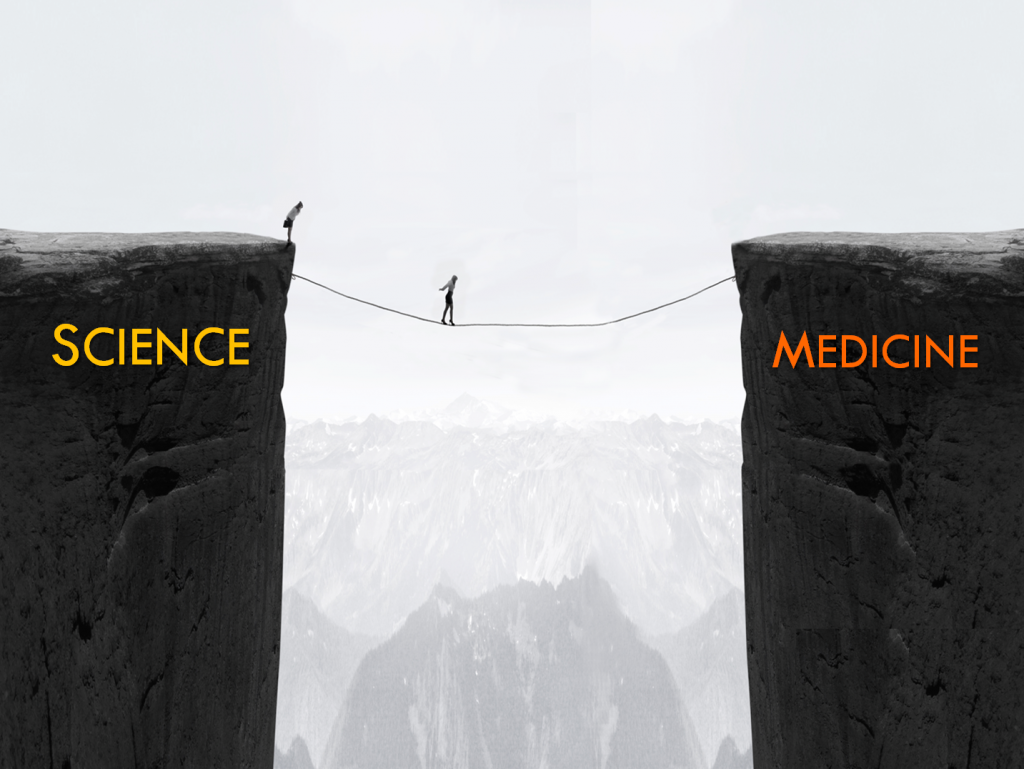
If modern medicine has failed to resolve your pain, you should know that it’s not your fault. The system they are using to treat pain, flat out does not work! Which is why, the overwhelming majority of people that develop pain, stay in pain.
The reason for this is the HUGE GAP between what science knows about pain and what conventional medicine is doing to treat it.
It’s not that doctor doesn’t want to help you – I’m sure that he or she does.
The current medical system is simply not set up to effectively deal with the pain conditions that affect most people in modern society – and because of that, people in pain end up being marginalized or ignored until their problems become “bad enough” to require the invasive interventions that medicine has to offer.
But, what if you didn’t have to rely on a broken system to resolve your pain?
What if you had the knowledge and the tools to get out of pain all on your own?
Can you imagine how good it would feel to wake up each day free from pain?
How would your life be different if:
- You woke up each day feeling strong, energized and ready to take on the world?
- You were able to roll around on the ground and play with your kids without hurting?
- You could go out and enjoy your favorite recreational activities knowing that you wouldn’t have to suffer with pain afterwards.
- Your self-talk started saying “I can” instead of “I can’t”
This program was created to help you do all those things with exactly that purpose in mind.
If you learn nothing else from what’s written here, I need you to understand this: The only way to eliminate chronic pain forever is by unleashing the incredible power of Kinetic Flow.
Focused on the Wrong Thing
The reason that conventional medicine fails so terribly when dealing with pain is because they are focused on the wrong thing. Conventional medicine treats pain by trying to remove pain.
But, being in chronic pain is like being trapped in a deep, dark hole. Medicine’s strategy for getting you out of the dark is to gather up and remove all the darkness to help you find your way out. (That’s what pain killers attempt to do).
But, that’s not how you find your way in the dark!
The best way to find your way in the dark is to add light. When you introduce light into a dark place, the darkness is pushed out because it has no choice.
What I’ve done for this program is taken the formula for eliminating pain and broke it down to just the essentials. I am going to show you how to introduce light into that dark place so you can find your way out.

It includes the many of same tips, strategies and techniques that I’ve used for the last 15 years to help thousands of people to resolve their pain – to get out of the darkness and back into the light.
The best part about this approach has the power to eliminate chronic pain as a side effect of restoring health. And it restores objective certainty to treating pain. You don’t have to wonder if you’re getting better because the improvement can be seen with your own eyes.
Before we get into the specifics, it’s important that you know about the most common pitfalls that keep people stuck in pain for life. In Secret #1 I’m going to expose the “fatal flaw” of conventional pain treatment. In the Secret #2 – I’m going to introduce you to the “Holy Grail” of pain resolution. And in Secret #3, I am going to reveal a strategy that will allow you to put the “Holy Grail” of pain resolution to work for you 24 hours a day, 7 days a week for the rest of your life.
SECRET #1: There is a HUGE gap between what science knows about pain and what doctors do to treat it.
If you go in to a hospital or into an urgent care/emergency room suffering with almost any chronic pain, the modern approach to your problem will be summed up in three neat little parts.
- A quick examination of the painful area.
- Basic Imaging of the painful area – If no immediate threat to your health is detected; that is where the search for answers about your pain ends.
- “The Clinical Dismissal”. This is where you are sent home with a prescription for pain killers, muscle relaxants and told to rest or immobilize of the painful area.
The idea here is that if we cover up the pain so you can’t feel it, then you don’t have a problem. Simply remove the darkness, right?
The underlying message that is conveyed through their treatment approach to chronic pain is somewhere between: “I’m sure ‘it’ will just work itself out” and “Come back and see us when you have a ‘real problem’.” Because pain is not imminent threat to your survival, modern medicine just does not take it seriously.
Can you imagine what it would be like if other professions operated the same way medicine does when it comes to chronic pain?

Imagine bringing your car to the auto-mechanic complaining that it recently began making a loud snapping noise while driving. The mechanic wants to help so he:
- Brings your car into the garage & examines your vehicle.
- Pops the hood and inspects the engine compartment.
- Checks the tension levels and functionality of the drive belts.
- Hooks your car up to a diagnostic machine and runs some tests.
But, he doesn’t immediately find anything. So, he closes the hood of your car, hands you some ear muffs and sends you on your way.
That’s it!
No further testing to determine what’s going on with your vehicle. No additional thought given to the horrible noise coming from your car.
Just: “Here, put these on. That ought to take care of it!”
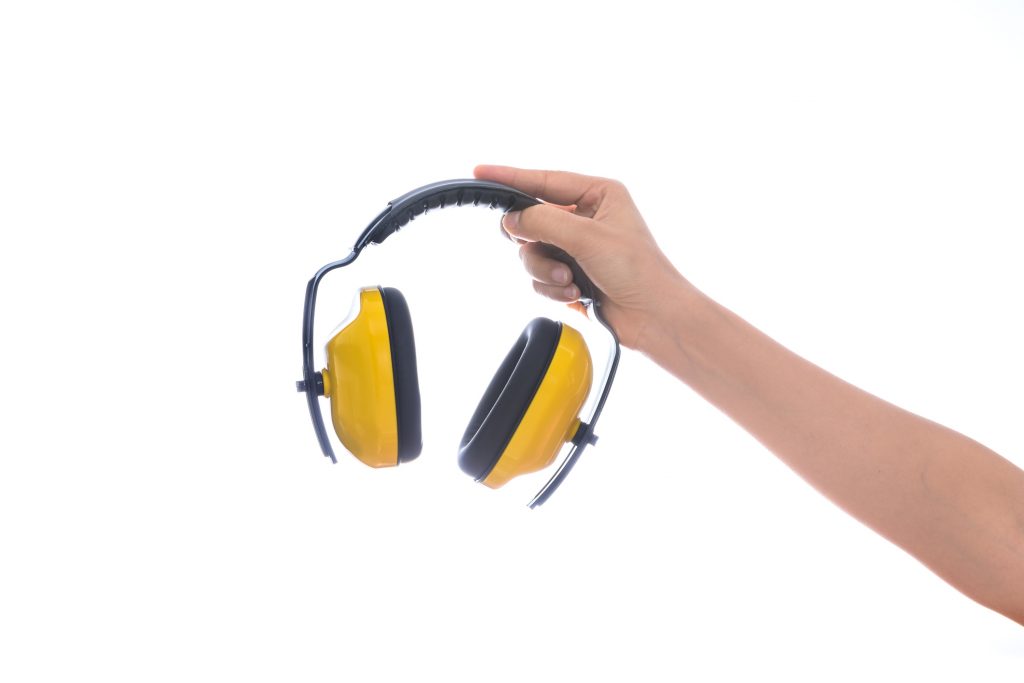
The idea of course, being that if you can’t hear that loud, awful snapping noise, then the problem has been resolved.
What if that horrible sound coming from your car was the first sign of a failing ball joint? When a they begin to go bad, they make loud snapping or popping sounds. When these joints fail, the wheels on your car can fall off!
Would you ever accept this level of service knowing that so much was a stake?

As a second example, imagine calling the Gas & Electric Company out to your house complaining of a terrible gas smell.
The technician arrives quickly and is eager to help so he:
- Looks around your house
- Checks the condition of the furnace
- Inspects the water heater
- Runs diagnostics on the oven & stove
But, he doesn’t immediately find anything. So, he closes the oven door, reaches into his toolbox, politely hands you a nose plug, and heads off to his next service call.
That’s it!
No more thought given to that terrible odor in your house. No further testing to figure out what could be wrong with your home.
Just: “Here, put this on. That ought to take care of it.”

If you can’t smell the gas, then you don’t have anything to worry about, right?
But, what if that smell was the first sign of a dangerous gas leak? Breathing enough of those fumes is extremely harmful. An electric spark or fire source could trigger an explosion inside your home.
Why would you ever settle for this level of service knowing that so much was at stake?
The outright dismissal of chronic pain makes no sense.
If you went into a hospital with any sign heart disease, they would immediately:
- Order blood tests
- Perform imaging studies
- Send you to a cardiac specialist who will perform more tests like EKGs and stress tests
- They would keep on going until they figure out exactly what the problem is.
If they see even the slightest sign of cancer, they immediately:
- Order extensive blood work
- Perform specialized imaging
- Send you to consult with the resident oncology expert who will then perform more tests.
- And they would keep on going until they figure out exactly what the problem is.
Well, chronic pain costs our country about almost $100 billion more than heart disease and cancer combined and for some strange reason, uncovering the root cause of these chronic pain problems is not treated as a priority![2]
The question is “Why”?
The answer is that the current, broken system for treating pain in the Modern World is built upon a foundation of three false beliefs:
- Medicine is using the best science and most-proven methods to treat pain.
- Give the pain some time and it will go away.
- Drugs are the best solution for pain.
MYTH #1 - Medicine is using the best science available and the most-proven methods for treating your pain.
I just had a patient come in complaining of severe pain in both of her knees. She was limping badly when she arrived at the office. She had been living like that for the past 5 months.
This woman had already been to see three other doctors before she came to see me. She had been:
- Examined
- X-rayed
- Given blood tests
All these tests had apparently revealed nothing because she was never even given an explanation as to why she was in pain. She certainly wasn’t given any information or recommendations that she could use to fix her problem and get back activities like hiking that she missed so much.
She was given a prescription for painkillers, another for anti-inflammatories and finally, a recommendation to rest her knees. Well, she had been on that plan for about 2 months before coming in to our office and in that time, her knee pain had not gotten any better and instead, had become much worse.
Sadly, according to a 2018 pain series published in the medical journal The Lancet, doing things that don’t work is one of the hallmarks for chronic pain treatment in the US. The authors note that there is a mismatch between “‘evidence and practice” and that doctors are completely missing the mark when it comes to treating pain.
Specifically, they are failing to use the things that have been shown to really work and help most people in pain. And, are instead doing too much imaging, prescribing too many opioids, doing to many injections and performing too much surgery.[3]
Adding insult to injury, many doctors are still recommending rest – which has been shown to delay recovery. Another paper in The Lancet series slammed medicine because of their complete lack of focus on prevention.
And why is there no focus on prevention of pain conditions within Modern Medicine? As one pain researcher admitted “they don’t really know what’s causing pain.” [4]
Experts at The American College of Physicians and The American Pain Society have developed a list of treatment guidelines for physicians to use when treating someone suffering from chronic pain. Their top recommendations include:

Staying active

Focused breathing techniques like those used with yoga and meditation

Regular exercise [5][6]
And yet, the treatment most-commonly used by physicians is non-steroidal anti-inflammatory drugs (NSAIDs).[7] That includes things like: Advil, Ibuprofen, Motrin, Aleve, Celebrex & others!
Because this is the most prescribed treatment, you would expect it to have a long, impressive track record for resolving pain, right?.
Not so much. One 2017 study published in The Annals of the Rheumatic Diseases found no significant differences in back pain and disability, among 6,000 people, between taking NSAIDs and a sugar pill. [8]
After reviewing all the scientific literature on the subject of NSAIDs and back pain, one famous pain researcher proclaimed: “There is no evidence to suggest that NSAIDs are helpful in chronic back pain or sciatica.” [9]
Furthmore, these drugs have a pretty horrible list of side effects. According to American Journal of Medicine, NSAIDs are responsible for over 100,000 hospitalizations (mostly from gastro-intestinal complications) and are responsible for over 16,000 deaths each year (among arthritis suffers alone).[10]
The second most-commonly used treatment for pain is rest. Not only is this exactly the opposite of the recommendations from the American College of Physicians and The American Pain Society. But there is little, if any, justification for this recommendation. What the literature does show is that rest, especially prolonged bed rest is extremely harmful and may actually delay recovery.[9]
The overall conclusion from Lancet’s series on pain was that:
“There needs to be greater recognition that much of the care for back pain is unnecessary, ineffective, harmful and is making the problem worse.” [11]
It’s a very good thing that we’re at a point where prominent scientific journals like The Lancet can come right out say thigs like this. Hopefully, this will act as a spark to get conventional medicine to change in the way they deal with chronic pain.
But, before we all get too excited about upcoming changes, we have to remember that the scientific community came to the exact same conclusion back in 2010. The Journal Arthritis Care & Research published an big study on chronic neck pain and found:
“…our findings indicate over utilization of diagnostic testing, narcotics and modalities, and the under-utilization of effective treatments such as therapeutic exercise.” [12]
And way back in 1987, The Journal Spine published:
“Traditional methods of care, involving rest and passive treatment modalities rather than activity, have been implicated in the alarming rise of people disabled by back pain.” [13]
The truth is that these problems have been well-known and documented for the past 3 decades and yet little, if anything, has changed in the conventional medical approach to the treatment of chronic pain. The problem has only gotten worse.
Modern medicine is not using the most proven methods for treating pain. The sad truth according to article published in March 2018 in The Lancet is that when it comes to chronic pain:
”the treatments that doctors prescribe are often the wrong ones”. [4]
And why is that?
Because “…in countries like the U.S., surgeries, injections and medications, like opioids, tend to be better covered by insurance…”[4]
MYTH #2 - Just give it some time and whatever is causing the pain will simply “go away”.
This is, by far, the most pervasive myth surrounding pain treatment in modern society. The medical literature is full of dismissive statements like the ones below taken from the British Medical Journal
“… most pain and related disability will resolve within a couple of weeks”. [14]
“Most cases of sciatica will resolve on their own, with no special treatment, within 3–6 weeks, just like low back pain or a crick in the neck.” [14]
“…the majority of patients fully or partially recover within six weeks.” [15]
These statements give the mistaken impression that pain is “no big deal”. Why would anyone go to the trouble to uncover the cause of this thing, if it’s just going to magically disappear on its own in a few weeks?
What this gives them is the perfect justification for not addressing the problem. Except for one small problem. Which is that for the majority of people suffering from chronic pain – They ARE DEAD WRONG!!!!
The # 1 Predictor of Back Pain
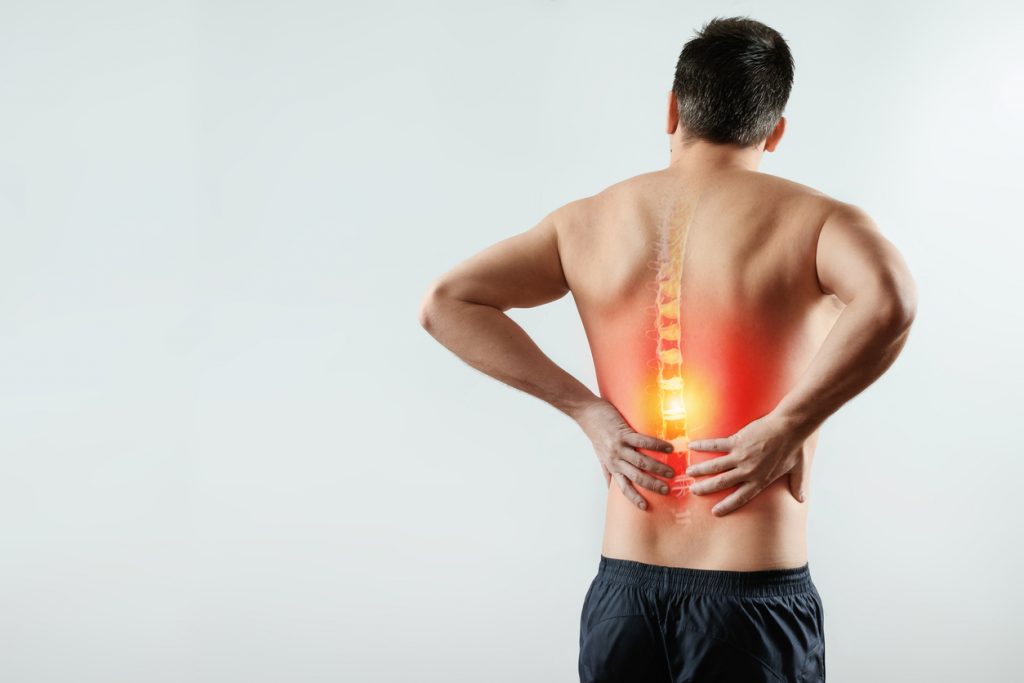
Do you know what the number one predictor of back pain is? A previous episode of back pain! The defining characteristic of chronic pain is, RELAPSE. The average relapse rate across 14 different studies on back pain was nearly 60%. [9]
In contrast, according to one large-scale study out of Europe only 6% of back pain sufferers report a single, non-recurrent episode.[16]
How can we begin to make sense of the gap between these two, very different sets of research findings? Let’s start by looking the criteria for statements like the one about back pain from the British Medical Journal that states:
“…most pain and related disability will resolve within a couple of weeks.” [14]
How did the researchers in this study determine that these patient’s problems were resolved? According to them, this was:
“illustrated by the finding that about 90% of patients with low back pain will have stopped consulting their doctor within three months.” [14]
Wait…that’s it! All they had to do was to stop calling and these researchers took that to mean that the patients were “all better”?
If that sounds flimsy to you, it should. Because, as it turns out, when a patient stops calling, it should not be automatically assumed that the person has recovered. The majority of pain sufferers end up consulting multiple practitioners about their problem. Six out of 10 times, when a patient with chronic pain stops calling, it just means they have moved on to a different doctor. [9]
Another study showed that “while most patients visited their general practitioner once or twice because of the problem, one year later 75% were still not symptom free.” [9]
The reality of the situation is that for the majority of chronic pain sufferers, the pain doesn’t just magically disappear. It’s an ongoing problem.
It may go away for a while but, it comes back over and over again. Chronic pain has been described as – “an untidy pattern of grumbling symptoms and periods of relative freedom from pain and disability interspersed with acute episodes, exacerbations and recurrences.” [9]
MYTH #3 - Drugs are the best solution for pain.
The third and final myth responsible for perpetuating the modern pain problem has to do with the most commonly prescribed treatment for all pain conditions – pain killing drugs.
Historically, this meant NSAIDs (like Advil/Ibuprofen) which, as we have already seen, are not helpful for chronic pain. But in the 1990’s, the stakes were raised – it was around this time that the powerful class of pain killing drugs known as Opioids really started becoming popular for the treatment of common pain conditions.
Prescriptions for opioids, increased by 400% from 1999 – 2010. [17] Commonly prescribed Opioids include:
- Vicodin
- Norco
- Dilaudid
- Hydrocodone
- Morphine
- Oxycodone
- OxyContin
- Methadone
Despite the massive increase in the number of these painkillers prescribed and using more powerful drugs than ever to fight pain, the number of people suffering from pain continued to rise. Chronic lower back pain for example, increased by 260% during some of the prime years of opioid prescriptions. [18]
If you’re wondering how that’s possible, it’s because according to researchers: Taking opioids for just 5 days actually leads to more pain!
“The implications for people taking opioids like morphine, oxycodone and methadone are great, since we show the short-term decision to take such opioids can have devastating consequences of making pain worse and longer lasting. This is a very ugly side to opioids that had not been recognized before.“ [19]
Using drugs as the go-to solution for pain has not only failed to solve the pain problem but, it has created new and arguably worse problems.
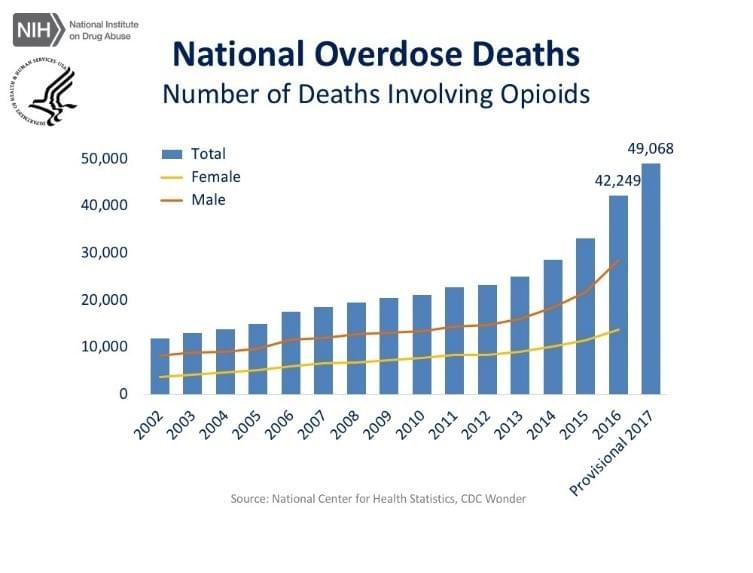
In 2016, CNBC reported that “Almost half of all Americans personally know someone who has been addicted to prescription painkillers.” [20]
Deaths due to Prescription opioid overdose have increased by nearly 500% since 1999. In fact, opioid overdose is the new 3rd leading cause of death.
Opioids are one of the main reasons why the United States just experienced its’ first decline in life expectancy in back-to-back years in half a century. Sadly, that increase in deaths has come from primarily among the young and middle aged. [21]
The current approach for treating pain has not just failed you, it has failed everyone. It is based on an unscientific model with a nearly two decade-long track record of death and disaster.[21]
I don’t want you to fall into the trap that so many others have fallen into. The reason that so many people are dying from prescription painkillers is because so many people are stuck in that dark place and they are looking for a way out.
If you’re going to have any hope of getting out of pain. You’ve got to start changing the way you think about pain. Pain is not your enemy. And it is not out to get you.
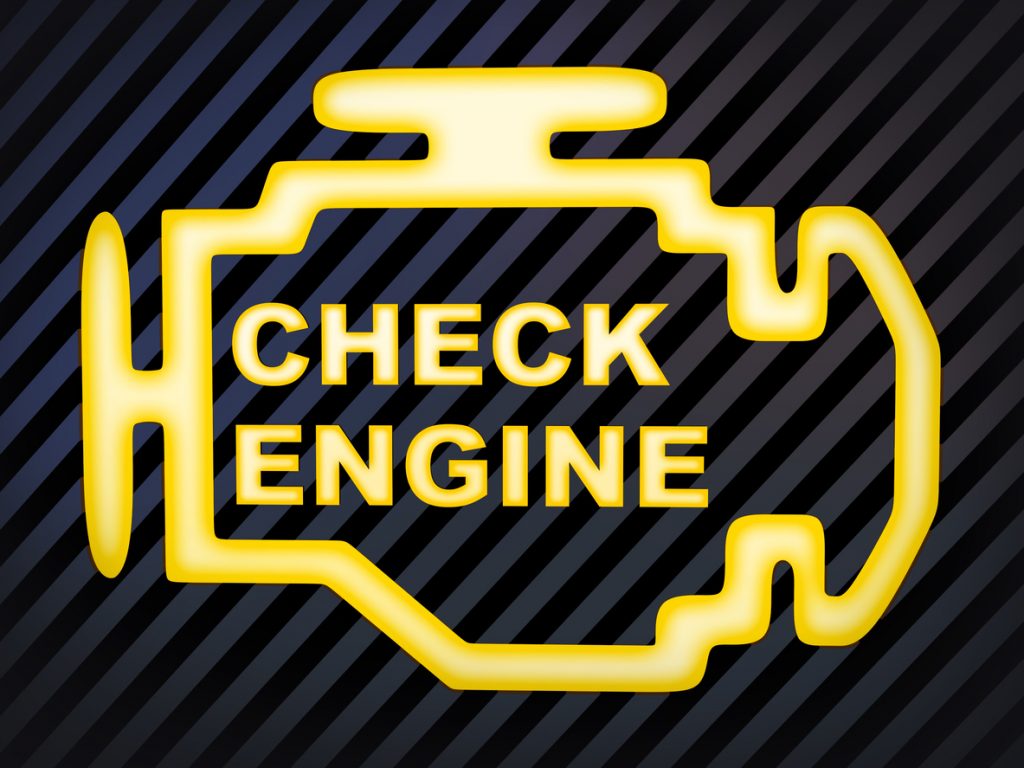
Pain is exactly like the “check engine” light in your car. It’s a warning indicator, a signal from your body that SOMETHING IS WRONG. And, just like with your car, the sensible thing to do when that “check engine” light comes on is to figure out what the problem so you can fix it fast – before it gets worse.
One thing is for certain, you should not just cover up the light with black tape and keep on driving – assuming that just because you can no longer see the warning light that the problem has been resolved or that it will just magically “go away” on its’ own.
SECRET #2: Kinetic Flow is the single most important factor to consider when it comes to the treatment and permanent resolution of chronic pain.
Kinetic Flow is also the one factor that those suffering with pain and their doctors consistently overlook and is solely responsible for keeping hundreds of thousands of people stuck in pain. If getting out of chronic pain is the goal, then knowing how to use Kinetic Flow is the difference between success and failure.
Over the last 25 years, science has made some truly remarkable discoveries regarding the critical role that movement plays in human health. These discoveries, for the most part have been embraced by the public.
It is now “common knowledge” that movement boosts energy levels, improves your mood, promotes better sleep, and radically decreases your risk for diabetes, cancer, heart disease. [22] [23]
But, one of the BIGGEST scientific discoveries related to movement has been completely ignored by both the medical community and the general public.
That discovery came in 1993, when Hooshang Hooshmand demonstrated that reductions in Kinetic Flow, led to a direct increase in subconscious pain signaling within the body [24].
What is Kinetic Flow?
You can think of Kinetic Flow as a massive river of neurological information that’s constantly flowing from your body up to your brain. It carries with much of the information regarding your body’s physical relationship to its’ environment.
The bulk of these signals come from:
- Movement (especially of the spine)
- Position updates from every single joint
- Location updates from all your body parts (similar to a GPS)
- Real-time updates from every muscle/tendon about their precise length and tension
- Pressure-sensing information
We need Kinetic Flow in order to successfully navigate our environment. At a more basic level, Kinetic Flow provides much of the fuel that is required to operate your brain and nervous system. This is the reason why more than 50% of your spinal cord functions a dedicated pipeline for delivering this critical nutrient to your brain.[25]
To understand how this works, imagine a city that gets its’ entire power supply from a large windmill. Wind causes the blades of the windmill to spin. That spinning generates power. That power flows to a Control Center where it is converted into a form of energy which can be used to power the city.
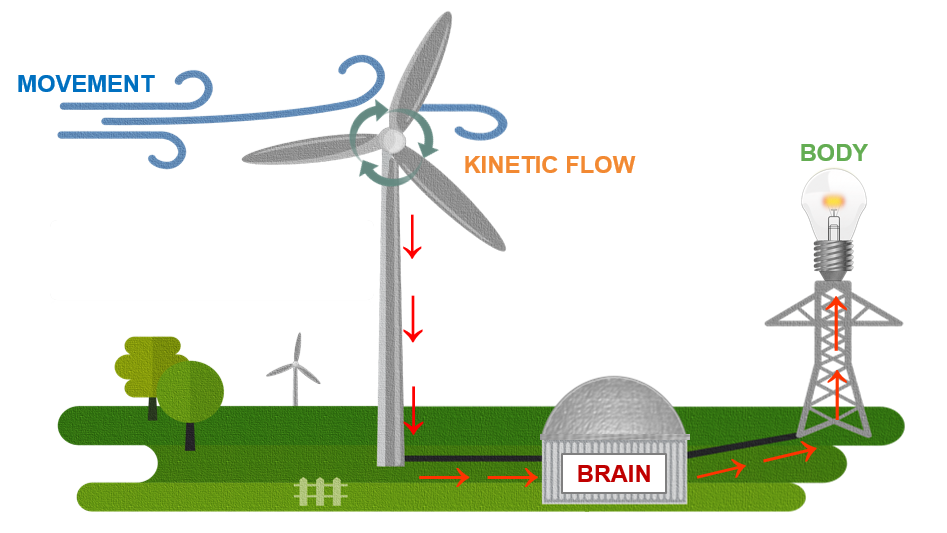
When the windmill spins a lot, A LOT of power is being produced. [26] But, when there is no movement of the windmill’s blades, no power is produced and the lights in the city begin to flicker and fade.
Your body works the exact same way. When you are in motion, you are producing lots of Kinetic Flow and your brain is able to operate at full capacity. When you move less, you produce less Kinetic Flow. Less brain fuel leads to decreased brain function. This is the reason why when teachers switch from traditional chairs in the classroom to stability balls, students’ scholastic performance improves. [27]
On the stability balls, students are constantly in motion, they’re engaging their bodies and their minds to remain upright and stable. This activity leads to a big spike in Kinetic Flow (compared with sitting on a regular chair) and leads to better test scores.
And just like the electricity that powers the city, if you remove Kinetic Flow altogether in the body…YOU GET A BLACKOUT. Guyton and Nolte, two of the most respected names in medical physiology indicated that:
“…if afferent [Kinetic Flow] signals are eliminated, the cerebrum would be incapable of functioning in a conscious manner and would actually approach a permanent state of coma.” [28]
Nutrients Essential for Life
So, by definition, Kinetic Flow is an essential nutrient. It’s just like the water you drink and the air you breath. Your brain and body simply CANNOT FUNCTION without it.
Think about what happens when you hold your breath under water. After 30 seconds or maybe a minute your heart starts to pound, your lungs begin to burn and if you stay under long enough, every fiber in your body will begin to scream out in pain.
THIS IS YOUR BODY’S CRY FOR HELP!
It’s telling you to get to the surface and give it what it needs – air. When you do that, that state of panic in your body and the pain associated with it disappear instantly.
Kinetic Flow works the same way.

Throughout human history we HAD TO MOVE to hunt and gather our food, to find water, to make fire, to build shelter. All the activities needed to stay alive REQUIRED US TO MOVE. Choosing Not to move was NOT an option and not being able to move would’ve almost certainly resulted in death.
Because of this fact, your DNA has been conditioned to treat the absence of movement as a THREAT TO YOUR SURVIVAL! When your body perceived this threat, it will react strongly by using pain signals to get you to change what you are doing in the interest of SELF-PRESERVATION. This is the same thing it does when you’re holding your breath underwater.
Your brain and nervous system are designed and built to use kinetic flow for fuel. That is why such a large percentage of your spinal cord is dedicated to carrying this essential nutrient to your brain.
When Kinetic Flow is not coming in your brain begins to starve and your entire ecosystem moves away from health. Thankfully, before you are completely starved of Kinetic Flow, your brain will detect that you are headed towards danger and it will begin sending messages to your conscious mind to get you to do something about it before it’s too late. Those messages often come in the form of pain.
So, we know that pain signals INCREASE when Kinetic Flow goes down, the question is: What can we do to boost Kinetic Flow?
Is there any proven method increasing Kinetic Flow? Thankfully the answer to that question is “YES”. Not only are there many different ways to increase Kinetic Flow but, there’s a large body of research that we can draw upon to help us determine which methods are most effective for reducing pain.
What we’re looking for, when we go through pain studies, are methods that have the ability to radically increase Kinetic Flow. Because we know that the more Kinetic Flow we can produce, the more pain signaling we can eliminate.
What better place to start than Whole Body Vibration (WBV)? WBV has been shown to decrease pain, increase functionality and reduce depression in as little as four weeks. [29,30,47]
A 2019 study pooled all the data from 16 different studies on the use of WBV for chronic pain. The conclusion from this study was that WBV has an overall positive effect on chronic musculoskeletal pain, and “long durations of WBV could be especially beneficial.” This is not surprising at all because more time on the vibration platform results in more Kinetic Flow. [31]
The next method for reducing pain that we’re going to look at is called Myofascial Release. This is a deep form of hands-on bodywork that was designed to restore motion to the body. Studies have shown that with as little as 6, twenty-minute sessions, it is possible to decrease pain, reduce sensitivity and increase range of motion. And more motion, means more Kinetic Flow. [32,33]
The next method has only become popular in the last decade or so, it’s called: kinesiology tape. This is that colorful tape that you often see professional athletes on TV wearing. Even though kinesiology tape is fairly new, there has been a significant amount of research done on it. Among other things, it has been shown to increase Kinetic Flow, reduce pain levels, decrease sensitivity and increase range of motion. [34,35]
The next methods for increasing Kinetic Flow are Mobilization and Manipulation. These are both passive movement techniques where your joints moved (by another person or a machine) through a range of motion.
These techniques have been thoroughly tested for their ability to reduce everything from neck and shoulder pain to foot pain and the results are extremely good. Both techniques have demonstrated time and again their effectiveness for increasing range of motion and decreasing pain. Researchers in one study on neck pain noted “the greater the increase in neck mobility: the less pain at rest.” [36,37,38,39,40]
The next method for eliminating pain FLYS DIRECTLY IN THE FACE of conventional medicine’s “go-to” recommendation of resting painful conditions. A mountain of research has been done on the use of Rhythmic Movement for reducing chronic pain. Among other things, studies have shown:
- As little as 10 minutes of walking can lead to significant reductions in back pain. [41]
- Leads to reduced frequency, intensity and duration of both headache and migraine pain. [42]
- And, it has been shown to reduce joint pain in obese individuals by over 70%! [43]
One very large pain study with over four thousand participants, demonstrated that the greatest reductions in chronic pain were achieved by people that incorporated the greatest levels of movement into their daily lives. [44]
There are thousands of studies on movement and pain but, the point that I want to make here, is that rhythmic movement just plain works! The really cool part, is that it doesn’t take a lot to get things headed in the right direction.
In one study they took a group of bedridden older stroke survivors that were suffering with pain and depression. They got them up out of their beds, two times a day to move their bodies through as much range of motion as possible. THAT’S IT! No Cross Fit. No running. No burpees. Just lots of movement! After just one month, every single one of these people was able to decrease their pain, reduce the depression and improve their functionality. [45]
The J. of Amer. Medical Assoc. knows exactly how important rhythmic movement is for the resolution of pain. In 2016, they published a huge meta-analysis which included over 30,000 participants and they analyzed and compared various inventions for back pain. The conclusion from analysis of all these studies:
Rhythmic movement “is the ‘most effective’ method ever studied for preventing pain.” [46]
The reason for this couldn’t be more clear. It’s because rhythmic movement creates regular increases in Kinetic Flow which provides your brain with the nutrients it requires – thereby suppressing the body’s pain pathways.
Each of the methods used in these studies has been shown to reduce pain because they all have in common the one thing that matters most – THEY ALL INCREASE KINETIC FLOW. That’s really the take-away point here.
When it comes to the treatment & permanent resolution of chronic pain, harnessing the power of Kinetic Flow is the key. Utilized correctly, this is THE MOST POWERFUL TOOL you have to condition your body to suppress pain signals and, over time, to reorganize the way your brain & nervous system produce and interpret these signals.
SECRET #3 - How to make sure that Kinetic Flow is working for you 24 hours a day, 7 days a week.
There are 1,500,000,000 people in the world suffering from chronic pain. [48] And, according to The Lancet’s series on back pain from March 2018 – The number of people in suffering from pain is expected to RISE SIGNIFICANTLY in the coming years because of two main factors:
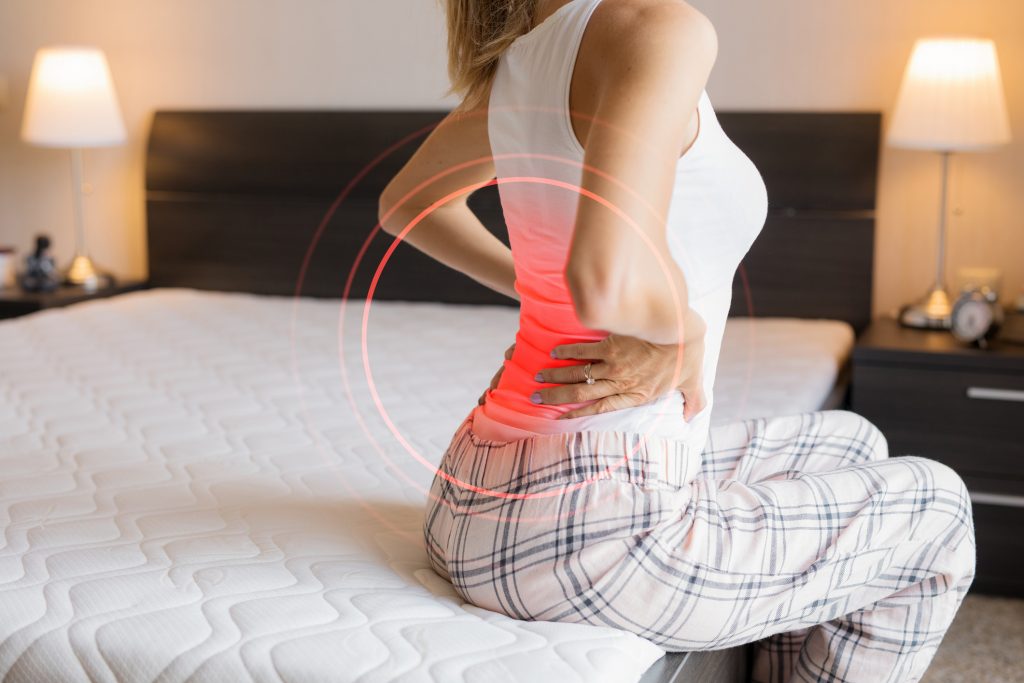
- A general aging of the world’s population. There does tend to be a greater incidence of pain with increased age but, other than making the lifestyle choices to ensure that we age gracefully (which should be a given whether you’re suffering from pain or not), there’s not a whole lot that can be done about chronological aging.
- A global population shift from rural areas and lower income countries to more developed parts of the world and the adoption of the modern lifestyle. [3] This factor was glossed over in The Lancet paper but, it’s critically important to recognize.
Chronic pain is a worldwide problem but, people in all parts of the world DO NOT suffer equally.
There are places in the world where chronic pain levels are a fraction of that in other areas. Back pain, for example, is 200%-400% greater in developed countries. Even if we look at undeveloped countries in isolation, back pain rates among urban are far greater populations than among rural populations. [49,50,51]
The Perfect Recipe for Pain
The major reason for the increased pain associated with modern living comes back to Kinetic Flow. Unfortunately, modern living contains the perfect recipe for pain:
Modern living is heavily centered around activities that reduce Kinetic Flow and severely lacking in activities that stimulate Kinetic Flow.
If you need proof of this, pay attention the next time you’re in an airport, train station or shopping center. You can see throughout the modern world this very clear trend whereby people are willing to line up and wait to take the escalator while the stairs are completely empty. This one example speaks volumes about the general trend of human activity patterns within the context of modern living.
One of the first things that happens as people move to more developed regions of the world is that they spend more time sitting. More time spent sitting inevitably leads to a reduction in Kinetic Flow.
This reduction in Kinetic Flow is the reason why head, neck, shoulder & low back pain have all been directly linked to sitting. [52,53,54,55]
In the modern world, sitting is a way of life. From the time we start school, we are conditioned to sit still for hours at a time. All levels of education and the most jobs in modern countries require large amounts of sitting, as does the commute to and from school or the workplace.
Add to this the fact, that much of our leisure time is spent in sedentary activities: texting, tweeting, surfing the Internet, social media, playing video games, binge TV watching. All of these lead to further reductions in Kinetic Flow which paves the way for chronic pain.

There are some individuals in the health sector that would have you believe that pain experienced during prolonged sitting is just because you’re not sitting properly or in whatever special way they deem to be superior. [56] This position is not supported by the current scientific literature.
While there is evidence that the risk for pain during prolonged sitting goes if you’re seated in an awkward position.[54] The research is quite clear that sitting itself is a problem – no matter what position you do it in.
Across 5 different studies, spanning multiple countries and nearly 20 years of research we find the same thing:
- Sitting is the number 1 position for aggravating back pain
- The more time you spend sitting, the greater the likelihood is that you will experience pain.[9,55]
How do you override and eliminate the pain caused by sitting too much? You increase Kinetic Flow!
That’s what a group researchers from Erasmus University in Rotterdam did. They created a specialized chair that passively moves a person while they sat. The researchers then tested pain levels in their chair against sitting in traditional chairs. [53]
They found that people receiving passive motion had significant reductions in pain and just under ¼ of their subjects experienced near total relief.
Interestingly, the researchers were not able to explain how the small movements of the seat in their study resulted in a beneficial effect on low back pain. They tried to explain it using a biomechanical model whereby the movement of the chair provided nutrition to the disc but determined that tiny amount of motion that was used was “too small for significant motion in all lumbar spinal segments.”
The Kinetic Flow model, on the other hand, explains the results of this experiment perfectly. The pain that the people experience while sitting isn’t caused by a lack of nutrition to the spinal discs, the problem is so much bigger than that.
It is caused by a lack of Kinetic Flow, a nutrient that is absolutely essential for proper function of your brain. In this study, the movement of the chair generated Kinetic Flow which gave the brain the fuel it needs, and this is what led to less pain. [53]
What does this study mean for the rest of us?
It means we have to be aware that sitting for hours on end, day-in and day-out, leads to a chronic deficiency in Kinetic Flow. When we add to that, the tendency of the modern lifestyle to greatly reduce or eliminate altogether many of the traditional opportunities to stimulate Kinetic Flow and it’s not difficult to see why pain is such a huge problem in modern society.
Either one of these factors taken on its’ own has the power to wreak havoc in your body but, the combination of these two factors leads to something called Posture Prolapse Syndrome which magnifies the destructive effects on your health exponentially.
Lessons from Sea World

Did you ever wonder why a killer whale’s dorsal fin flops over and hangs limply to the side when they are in captivity?
You don’t have to be a marine biologist to realize that something is wrong when you see an image like this one.
A killer whale’s dorsal fin is made up of dense connective tissue. Normally, that tissue is strengthened and molded by the enormous pressure of the deep ocean when the orcas do what they do in the wild…
– which is dive to incredible depths and swim across vast distances of open ocean.
In captivity, the tissues of the dorsal fin weaken, atrophy and the fin eventually falls over as a result of all the animal’s time being spent at the surface in a small pool. According to experts, less than 1% of wild orcas have “fin collapse”. [57] Whereas, in captivity the incidence, especially among males, may be as high as 100%. [58] The regular occurrence of “fin collapse” in captivity has been attributed to:
- Lack of movement
- Limited space
- Too much time spent at the surface
Sounds a lot like modern living, doesn’t it?
Posture Prolapse Syndrome
The EXACT same type of predictable, repeatable structural changes can be observed in the human body when we are exposed to lack of movement and stagnation.
Posture Prolapse Syndrome is the progressive deterioration and collapse of all the body’s secondary curves and a corresponding loss of the functionality that is associated with those curves.
The easiest way to spot Posture Prolapse Syndrome is by identifying a forward head position. Normally, the ear hole should be directly in line with the center point of the shoulder (when viewing the body from the side).
When the ear hole is pushed way out in front of the center point in the shoulder, that’s forward head position. This posture is the structural equivalent in humans to fin collapse in orcas.
Unfortunately, modern society is witnessing the deterioration of our physical structure on such a wide scale that forward head position has actually become the new “norm”. More people have this posture now than have normal posture.
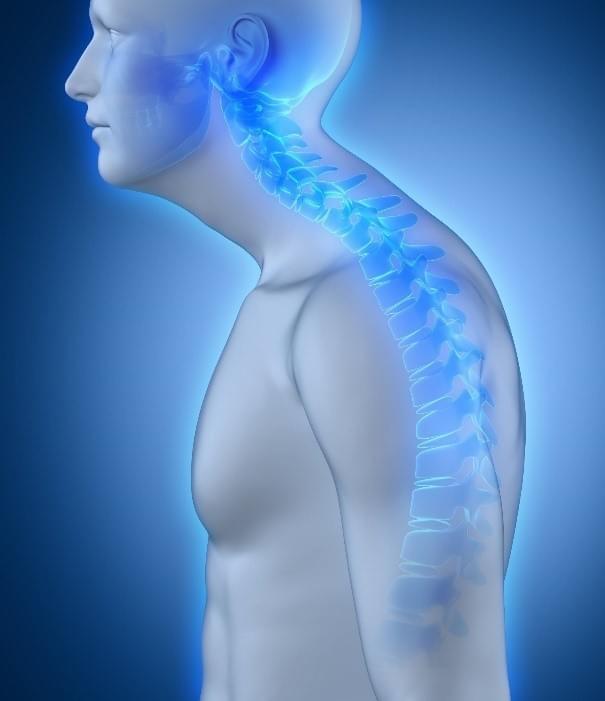
The one published study that looked at the incidence of forward position and found the incidence to be 66% of the population. [59] But, that study was published back in 1992!
That’s before the widespread use of smartphones, E-Readers, laptop computers, and non-stop social media & texting. This posture is so common nowadays, that it’s no longer the exception but, the rule. It’s more of the surprising when you see someone that doesn’t have it.
Besides Forward Head Position, other signs of PPS include:
- Thickening of the Trapezius muscles at the base of the neck [60]
- Rounding of the shoulders
- Outward bowing of the spine or the appearance of a hump back (Hyperkyphosis)
- Flattening of the buttocks
- Splaying of the feet – Loss of the arch structure
- Bunion formation
These structural changes are accompanied by:
- Physical dysfunction (which is most often expressed as mobility restriction)
- Not being able to do physical things the way you used to
- Reduced energy levels / Fatigue because it takes a lot of energy to hold yourself in an inefficient position all day, every day
- Pain
PPS has been directly linked to all the most-common pain conditions in the modern world. [61,62,63,64,65,66,67,68,69,]
- Back Pain
- Neck Pain
- Disc Herniations
- Headaches
- Migraine
- Arthritis
- Carpal Tunnel Syndrome
- TMJ
- Asthma
- Early Degeneration
- Decreased Functionality
How significant is the relationship between pain and Posture Prolapse Syndrome? At the International Fibromyalgia conference in Seattle one researcher was quoted:
“The major portion of head, neck, jaw, and shoulder pain experienced by many Fibromyalgia and CFIDS patients was attributed to the head & neck posture of the sufferer.” [66]
The link between structural deterioration and chronic pain is plain as day, once you know what you’re looking for. Take chronic shoulder pain, for example. The most-common causes of shoulder pain are injuries and tears to the rotator cuff. [70].
Research has demonstrated that the incidence of rotator cuff tears is 16-21 times greater with Posture Prolapse Syndrome [71]
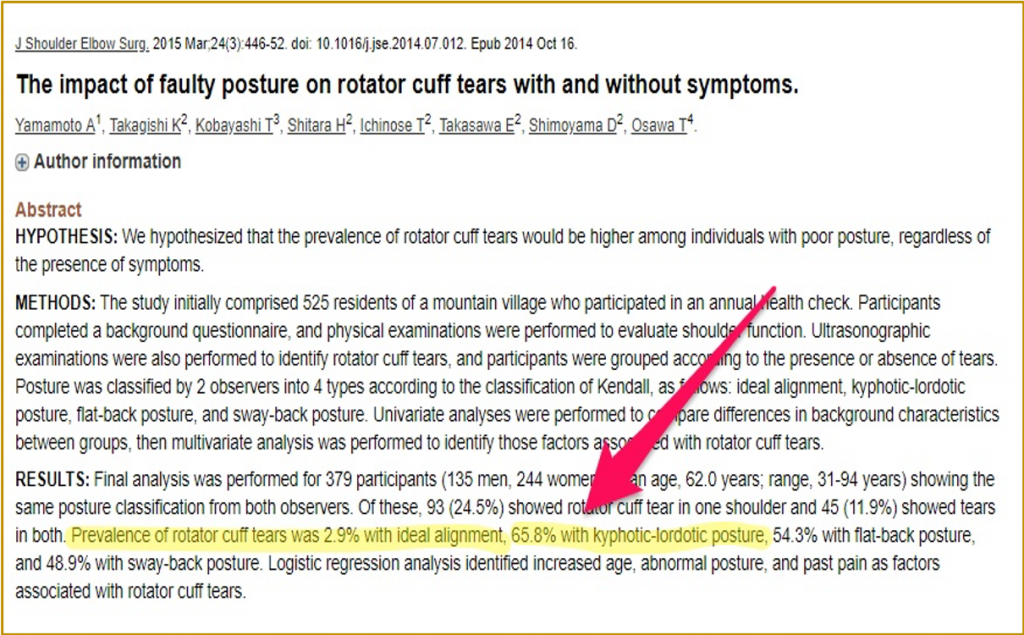
This research simply confirmed what I’ve seen in clinical practice for the last decade and a half. Over and over, I see patients suffering from shoulder pain they have torn rotator cuffs and no history whatsoever of trauma.
Modern medicine does a great job using advanced imaging procedures to diagnose these problems and their solution makes sense at the most basic level. It seems perfectly reasonable to go in surgically and sew the torn muscle back together, right?
The problem is that they never even bother to ask “Why?”.
- Why did a person, with no history of trauma, tear their muscle all of a sudden?
- What are the underlying issues that led to this problem in the first place?
Because, as it turns out, when you just go in and sew the torn rotator cuff back together and fail to address those other issues, 8 times out 10, it just re-tears! [72]
Why? Because the surgery does nothing to correct the underlying structural problems that set the stage for the injury in the first place.
Unfortunately, pain and injuries like rotator cuff tears are only the beginning when it comes to the problems caused by Posture Prolapse Syndrome. PPS negatively impacts functionality on all levels.
EVEN the simplest daily activities become much more challenging for people with PPS. Things like:
- Bending down to pick something up
- Getting up from a chair
- Walking
- Climbing stairs
- Holding on to something [73]
This is why PPS has been directly linked to loss of independence and increased need of assisted living in older people. [74,75]
Posture Prolapse Syndrome even interferes with the most fundamental of all human activities – breathing. PPS has been shown to lead to a loss of nearly 1/3 of your total lung capacity! To put that into perspective, that means that a person with advanced Posture Prolapse Syndrome operating at sea level would have about the same oxygen availability as a person with normal posture would have at an elevation of 11,000 feet. [74,76]
Pain is Only The Beginning
Posture Prolapse Syndrome slowly and quietly destroys your life. Here is a list of some of the recognized conditions that stem from Posture Prolapse:
- Pain
- Disc Herniations
- Nerve Compression
- Thoracic Outlet Syndrome
- Increased TMJ tension and Bite problems
- Chronic muscle strain
- Soft tissue pain syndromes
- Decreased blood flow to the spinal cord
- Early onset Degeneration and Arthritis
- Hemorrhoids
- Intestinal Problems
- Varicose Veins
- Osteoporosis
- Hip & Foot Deformities
- Poor Health
- Decreased Quality of Life
- Shortened Life Span
The first half of that list was published by The Mayo Clinic in the year 2000. The second half was published in the Journal of the American Medical Association and dates all the way back to 1957. [64,65]
Medicine has known exactly how important structural health is for over 60 years and yet, when was the last time your doctor looked at your posture? This massive problem is completely overlooked by modern medicine for only one reason – because they have no way of effectively treating it.
Physical structure gives more information about a person’s health status than you can possibly imagine. It can used to predict mortality.
People with PPS are:
- Almost 2½ times more likely to die from athlerosclerosis
- 2 times more likely to die from pulmonary causes
- 1½ times more likely to die from anything & everything [77]
Posture Prolapse Syndrome starves you of essential nutrients. It doesn’t just rob of these things in the moment, like sitting or holding your breath underwater does.
The effects of PPS build up inside your body. So, the damage compounds over time. If you don’t do something to reverse it, it creates pain and dysfunction every minute of every day until it robs you of your ability to move completely.
Thankfully, the opposite is also true….
And if you are willing to take charge of your health, educate yourself and grab the wheel then you’ll be able to sidestep the fatal flaw of modern medicine’s approach to treating pain, and restore your structural birthright as well as the natural functionality that accompanies it and, you’ll be able to put kinetic flow to work for you – “feeding your brain and eliminating pain” 24 hours a day, seven days a week then you can eliminate your pain and get your life back. My patients do it all the time.

“Finally, after over 3 years of suffering, my shoulder is healed!
I tried everything to make it better.
All of the tools in Dr. Whitten’s toolbox combined to finally heal my shoulder in a matter of weeks.
Not only is my shoulder better, but my posture is way better. I feel taller, stronger, and overall awesome!”
Christian M.
If you’re excited about all this information and ready to give your pain the boot and get back your life but, you’re feeling a bit overwhelmed because we covered so much information and you’re not sure exactly where to start, don’t worry. If it’s alright with you, I would like a little time to go over a very special offer that I’ve created that lays out the actions steps you need to take in order to reduce or eliminate your pain forever.
Let me start by asking you a question:
If you were able to avoid the pain treatment pitfalls that keep so many people in pain & stuck in that dark place that we talked about in Secret #1, and if you started incorporating the power of Kinetic Flow like I showed you in Secret #2, and then you used Secret #3 to actually reverse Posture Prolapse Syndrome and remove the road blocks to maximizing Kinetic Flow do you think you could reduce or even eliminate your pain all together?
The Pain Fix Protocol Master Class

What we are going to cover:
- The true meaning of pain
- The evolutionary rationale for pain’s existence
- Understanding the language of pain – your body’s way of speaking to you
- The critical distinction between acute and chronic pain
- The critical link between pain and functionality
- The Structural / Functional Continuum (Life Cycle)
- Establish clearly-defined standards for both structure and function – Once you reach this level of functionality, the odds of being in pain drop off significantly
- The root causes for the majority of the chronic pain associated with modern living.
- Strategies for overcoming common obstacles that stand in that way of getting to pain free. They include structural problems, joint mobility issues, muscle imbalances as well as lifestyle issues. We cover these in great detail because it makes no sense to be treating problems while at the same time creating or reinforcing the same problems.
- By identifying the root causes of these problems – we can create not only a more effective treatment solutions but also a much more efficient ones. We won’t have to waste time dealing with all the little downstream issues of big problems. Instead, we can fix the upstream issues and enjoy the certainty of knowing that the downstream ones will take care of themselves.
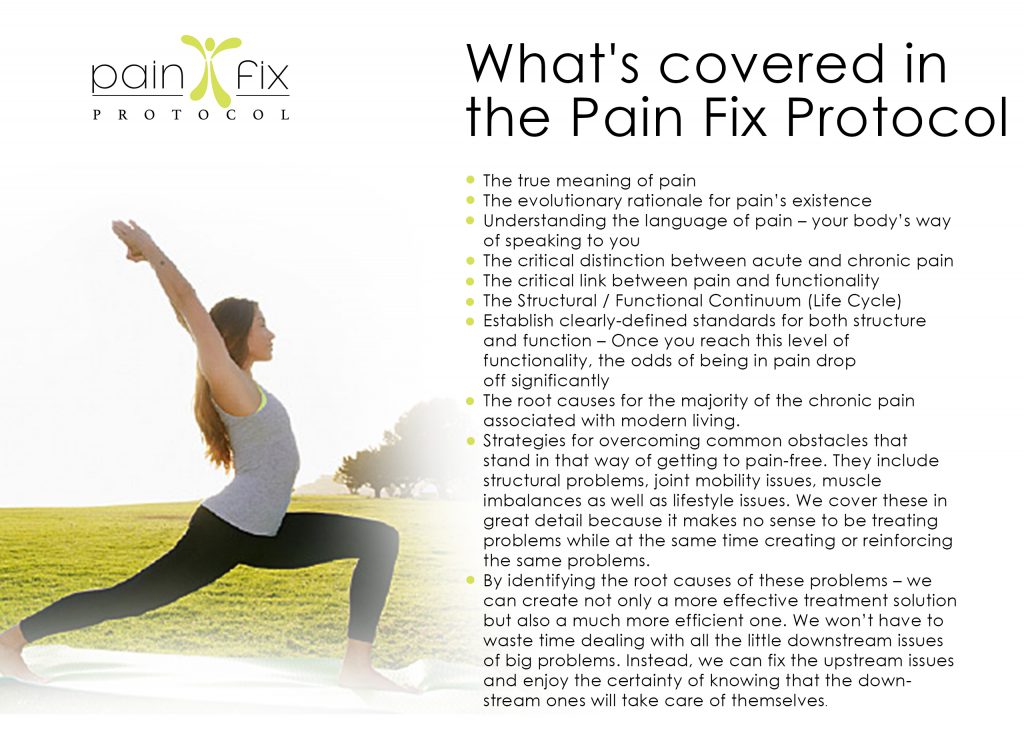
Over the years, there have been so many different issues that have brought people to my practice. Among the most common are:
- Headaches
- TMJ & Jaw Pain
- Fibromyalgia
- Chronic Fatigue
- Chronic Pain – Neck, Shoulder, Elbow, Wrist & Hand, Back, Hip, Knee, Ankle & Foot
- Multiple Sclerosis
- Lyme Disease
But, the one thing all these people have in common is pain. Pain sucking away their quality of life.
They can’t do the things they want to do anymore.
Chronic pain is a brutal thing to live with.
People suffering with it for any length of time have been built up and let down so many times that they have nothings left. Often times the people I work with have lost the light in their eyes and are emotionally flat because they’ve been hurting for so long.
Their first doctor wasn’t able to help them. And the person he/she referred them to, and the person after that either couldn’t help them or told them they were doomed to spend the rest of their lives in that painful state (or wait until it was so bad that a surgery could save them) that they stop trying.
I want you to know that change is possible. You can get your life back. My patients do it everyday.
“I was told by several leading surgeons that having surgery was a forgone conclusion.”
“Yes, I was in terrible pain but, at 38 years old, and never having been in a severe accident I was surprised to be hearing this.”
“After just a couple months I am back to lifting heavy weights, running and I just signed up for a Half marathon. Life as I knew it, is BACK!”
– Neal M.

When you sign up, you’re going to get instant access to The Pain Fix Protocol masterclass, a total value of $650
Included in The Pain Fix Protocol, you’re also going to get The Pain Fix Protocol Solutions series. This series will outline exactly what you need to do, from A to Z to resolve the most-common pain conditions in the modern world.
These comprehensive programs detail everything you need to know about resolving neck pain, upper and lower back pain, shoulder and hip pain as well as foot & ankle pain.
The Pain Fix Protocol Solutions series are a compilation of the “greatest hits” pulled directly from my patient library – these are the same programs that I have used and perfected over the last 15 years to help people just like you get rid of their chronic pain and get their lives back.
If you were to go see ten different doctors, therapists and body workers for your problem (and I’m sure some of you already have) you would end up with ten different diagnoses, ten different answers as to what is causing your problem and ten different sets of solutions for that problem. How would you know which one was right?
The Pain Fix Protocol will allow you to streamline the process, start addressing the underlying issues that are the root cause of the vast majority of chronic pain conditions. The best part is many of the root causes of chronic pain can be eliminated on your own by using these scientifically-backed, proven methods.
- The Pain Fix Protocol Solutions series programs are your road map to resolution. They will provide you with the direction, the certainty and step-by-step instruction needed to get rid of the pain that is weighing you down and allow you to finally get your life back.
- The Pain Fix Protocol Solutions series make it faster and easier than ever before for you to get yourself out of pain and, once you’re there, to keep yourself pain-free for the rest of your life.
While there are slight modifications to the treatment protocol for each individual, there remains a very specific recipe for resolution for most chronic pain conditions. Because there are certain issues that crop up again and again –these issues must be addressed with almost every person suffering from chronic pain.
In the end, I have found it to be a lot like cooking. If you want your dish to end up with a specific flavor, there are certain ingredients that need to be included to get the right end result. That’s what the Pain Fix Protocol Solutions Series provides.
As part of The Pain Fix Protocol program, you’re going to get PFP Progress Tracker, that will allow you to objectively measure and track your improvement on the way to getting your life back – exactly the same way I do with my patients in the office.
In addition, you are going to receive all of The Pain Fix Protocol Daily Movement Prescriptions (DMP) Templates. These templates condense the information from the Pain Fix Protocol Solutions Series into easy-to-follow mini-programs – so you know exactly what you need to do each and every day to resolve your pain and keep it gone forever.
You’ll have absolute certainty that you’re doing the right things every day to get yourself out of pain.
You’ll be able to track your progress and monitor your improvement along the way. With these tools, you’ll be able to eliminate all guesswork, inefficiencies and trial and error needed to come up with your own programming – I’ve already done that for you.
When I began working with patients, I realized that most people had the exact same questions:
- Does the order that the DMP are performed in make a difference?
- What is the best sequence in which to perform the daily movement provisions?
- Which movements are better to perform in the morning?
- Which are best in the evening?
- How long before I start seeing and feeling results?
The Pain Fix Protocol DMP templates put the answers to all these questions right at your fingertips.
I usually have my patients print them out and put them up somewhere they can easily see them every day. It acts as a great reminder and motivator when you see where you started and how far you’ve come! This will add to your momentum and serve as good encouragement to keep going.
- With The Pain Fix Protocol you’re going to save yourself hours and hours of time spent searching the internet, reading books and scientific journals.
- You’ll end up saving yourself thousands of dollars on doctor visits, prescription drugs and days/weeks/ months or even years of lost productivity. My only hope is that once you’re pain-free, you take that money you saved and spend it doing the things that you love that you weren’t able to do when you were in too much pain.
You might be saying to yourself:
“I’ve already seen so many doctors, physical therapists, surgeons, acupuncturists, massage therapists and they couldn’t figure my problem out. – It can’t really be that simple.”
Yes, it can! It’s true that chronic pain is often a complex, problem that is made up of many parts.
But, it is also true that the physiology of the human body is fixed – meaning your body has a set number of ways that it can respond to environmental input which is why there are certain commonalities between most, if not all, chronic pain conditions. And, the wonderful news is that once you begin resolving the large upstream issues, the downstream stuff tends to become much easier to address.
In addition to everything else, when you invest today, you’re also going to receive The Pain Fix Protocol Video Tutorial Series including over 60 step-by-step video tutorials covering every detail of the each and every one of the movements you are going to use to reset your pain forever.
- These are many of the same movements I have used to help my patients get rid of their pain and get their lives back over the past 15 years.
- A significant amount of time from every in-office session is spent on the instruction, demonstration and performance of these exact movements.
- Many patients struggle with the same subtle nuances of these movements but, with these tutorials you won’t have to.
- You can go through the applicable videos at your own pace and review any movements that you need additional help with.
The Pain Fix Protocol Video Tutorial Series are going make it faster and easier than ever before for you to get yourself out of pain and more importantly, to keep yourself out of pain for the rest of your life.
You may be wondering whether you will be able do the movements/ exercises and stretches that are part of this program? Or, if they will be too complex?
- People often worry that movements we use may be too complicated or challenging for them.
- We always start with the least complicated, least stressful version of a movement and from there, we build it up so anyone can be successful.
- No matter how much pain you are starting with, we will meet you at that level and build you up over time at the pace that’s best for you.
- As you achieve higher and higher levels of functionality, your pain will naturally begin to fade away.
Also, when you purchase The Pain Fix Protocol, I am going to include a section on using sleep to combat chronic pain. In it, I am going to share:
- Powerful research that directly links sleep problems with chronic pain.
- Real-world strategies for how to set up your nightly routine to reduce and eliminate pain while you sleep.
- How to avoid the common sleep errors that keep so many people stuck in a lifetime of pain and disability.
If all this package did for you was reduce or eliminate your chronic pain, would it be worth $3,300?
Because the whole point of this program is to be able to make these techniques available to everyone, I’m not going to charge you $3,300.
But if I DID charge you $3,300 and all it did was resolve your chronic pain, would it be worth it to you?
- If all this system did was help you unlock the “holy grail” of pain resolution, would it be worth $3,300?
- And if all it did was make sure that you never fall victim to the pitfalls commonly associated with modern-day approach to treating pain, would it be worth $3,300?
- And what if all it did was ensure that all three pathways to maximizes Kinetic Flow were fully employed to have you moving well and feeling great, then would it be worth it?
What wouldn’t you give for the opportunity to be pain free?
“When health is absent,
wisdom cannot reveal itself,
Art cannot be manifest,
Strength cannot be exerted,
Wealth becomes useless,
and Intelligence cannot be applied.”
– Herophilus, 300BC
If you had a concrete plan in place to reduce or eliminate your chronic pain, what would it be worth to you?
You can probably see why people are willing to pay $3,300 work with me toward that very goal…because they don’t view it as a cost – they see it as an investment in their quality of life for the rest of their life.
- You’ve already seen how The Pain Fix Protocol is worth $3,300.
- And even at $3,300, which is what patients in my office would pay for this amount of information and instruction, it’s a great deal.
- But because my goal is to make this powerful and transformative information available to everyone that’s suffering from pain, I’m going to make you a very special offer.
You can get The Pain Fix Protocol for just $499
Let me put this into perspective; if you were to come to California and see me at my office, the initial visit alone would cost more than the price of this program.
The average total cost for a chronic pain treatment plan is $3,985. But, because you’ve invested this time with me today and demonstrated that you’re highly motivated to free yourself from pain, I’m making a very special offer.
Because my goal is to offer every person suffering with pain as much information and as many science-backed tips, tools and strategies for eliminating pain as possible, I’m going to give you even more.
I teamed up with leading experts in the fields of health / wellness & neuroscience to add even more layers to this program. So, for people that sign up for the Pain Fix Protocol in its’ first release, I am going to offer two special bonus sections:
Bonus 1 – Best-selling author and health expert Ari Whitten guides you in how to use the power of light to reduce and eliminate pain.
Bonus 2 – Best-selling author and neuroscience researcher Mark Waldman lays out the science & strategies for tapping into the power of mindfulness as a means of reducing pain.
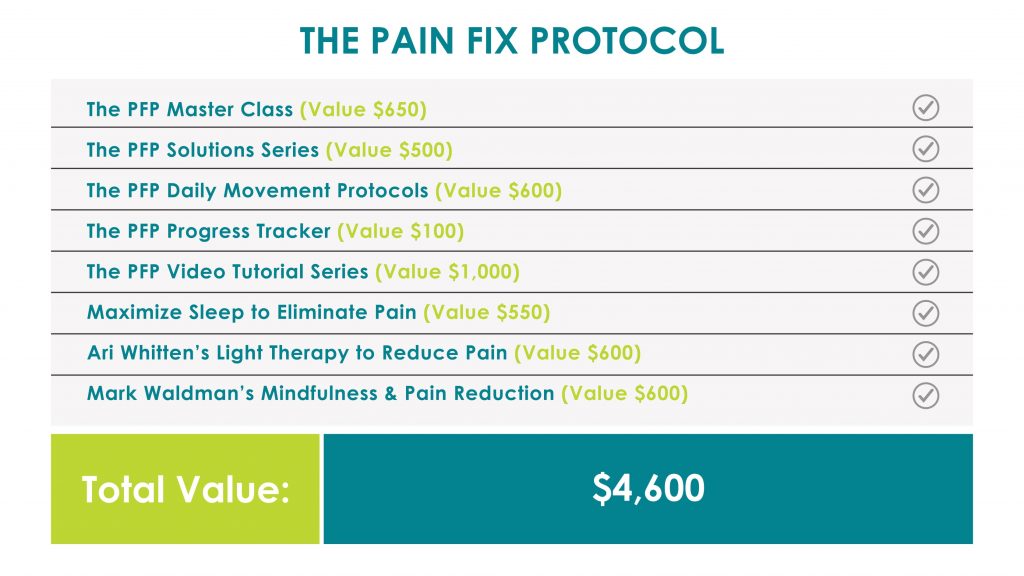
At this point, you’ve got two choices:
- Choice #1 is to do nothing. I never push people to work with me. (The reason that helping people to resolve their pain is so fun for me because I get to work with people that are highly motivated to change their situation.)
So, I want to be clear, it is perfectly okay with me if you can choose to stay in pain. You can go on suffering and look back fondly on the time in your life when you could do the things you love to do and didn’t hurt all the time.
- Choice #2 is to take a leap of faith. See what happens to the results you’re getting when you start giving your body what it needs.

The great news here is that you have nothing to lose. I am so confident that this program will reduce or eliminate your pain that I am going to offer you a 30-day money-back guarantee.
So, here’s the real question: Is it worth gambling a few minutes of your time to check this out? Even if The Pain Fix Protocol resolves only half of what you’re dealing with, your life will be that much better for it.
You don’t live in pain. You have the power to break your pain cycle – all you need are the right tools and the correct strategy.
Or, you can do nothing. Worse than that, you can follow the erroneous path of modern medicine and:
- Take your pain killers and block the critically important messages that your body is desperately trying to get you to hear.
- Take your muscle relaxants and completely disregard the reasons that your body brought those muscles into a state of spasm in the first place.
- And rest. Thereby creating even greater deficiencies in Kinetic Flow – the one thing that’s proven over and over again in the scientific literature to be the single most important factor in getting people out of pain.
But why suffer needlessly? Why not let the Pain Fix Protocol show you how to get rid of your pain for good and get back to loving life.
When you invest in the Pain Fix Protocol – You’re going to get all – A total value of over $4,500 for just $499! Who would’ve thought that for less than $500 you could radically change your life?
So, join me and Let’s start eliminating your pain today!
References:
- ASCOT and Other Study Results Show Some Surprising “Causes” of Hypertension: Chronic Pain Associated With Increased Prevalence of Hypertension.com Monday September 17, 2018
- Based on statistics from the National Institutes of Health (NIH), Darrell J. Gaskin and Patrick Richard. Appendix C -The Economic Costs of Pain in the United States – 2010.
- Prevention and treatment of low back pain: evidence, challenges, and promising directions.N.E Foster, J.R Anema, D. Cherkin, R. Chou, S.P Cohen, D.P Gross, P.H Ferreira, J.M Fritz, B.W Koes, W. Peul, J.A Turner, C.G Maher. The Lancet Low Back Pain Series Working Group. The Lancet. Published: March 21, 2018
- https://www.kpbs.org/news/2018/apr/05/ineffective-treatment-often-prescribed-for-lower/
- Noninvasive Treatments for Acute, Subacute and Chronic Low Back Pain: A Clinical Practice Guideline from The American College of Physicians. April 4, 2017 Amir Qaseem, MD, PhD, MHA; Timothy J. Wilt, MD, MPH; Robert M. McLean, MD; Mary Ann Forciea, MD; for the Clinical Guidelines Committee of the American College of Physicians
- http://americanpainsociety.org/education/a-pain-research-agenda-for-the-21st-century
- https://www.health.harvard.edu/pain/the-best-meds-for-back-pain
- Anti-inflammatory drugs show no clinically significant effect in back pain, study suggests. The Pharmaceutical Journal. February 7, 2017 Emma Wilkinson.
- Robin McKenzie – The Lumbar Spine, Mechanical Diagnosis and Therapy. Vol. 1 2006.
- “Deadly NSAIDs” Nutrition Digest – American Nutrition Association. Volume 38, Number 2. http://americannutritionassociation.org/newsletter/deadly-nsaids
- The Lancet Mar. 2018. Podcast: Low Back Pain
- Goode, AP. Freeburger, J. & Carey, T. “Prevalence, Practice Patterns, and Evidence for Chronic Neck Pain.” Arthritis Care & Research (Hoboken) 2010. 62(11) 1594-601.
- Waddell, G. “A New Clinical Model for The Treatment of Back Pain. 1987 Volvo Award in Clinical Sciences.” 1987. September 12 (7) 632-44.
- Koes, BW, Van Tulder, MW and S. Thomas. ”Diagnosis and treatment of low back pain” BMJ. 2006 Jun 17; 332(7555): 1430–1434.
- C. HUMPHREYS, J.C. ECK and S.D. HODGES, “Neuroimaging in Low Back Pain.” Amer Family Physician. 2002 Jun 1;65(11):2299-2307.
- Picavet HS1, Schouten JS. Musculoskeletal pain in the Netherlands: prevalences, consequences and risk groups, the DMC(3)-study. Pain. 2003 Mar;102(1-2):167-78.
- Prescription Opioid Data. Centers for Disease Control and Prevention. https://www.cdc.gov/drugoverdose/data/prescribing.html
- Freburger, J.K., et. al. The Rising Prevalence of Chronic Low Back Pain. Arch Intern Med. 2009 Feb 9; 169(3): 251–258.
- “Opioids might Worsen Pain, Study Finds. Honor Whiteman, Medical News Today. Published Tuesday 31 May 2016. https://www.medicalnewstoday.com/articles/310645.php
- Pain Killer Epidemic: Nearly half of Americans know an addict. Dan Mangan at CNBC. PUBLISHED TUE, MAY 3 2016 3:00 AM EDT https://www.cnbc.com/2016/05/02/painkiller-epidemic-nearly-half-of-americans-know-an-addict.htm
- “Prescription Painkiller Overdose.” Vital Signs – Centers for Disease Control and Prevention. https://www.cdc.gov/vitalsigns/prescriptionpainkilleroverdoses/index.html
- https://mindbody.io/blog/wellness/movement-beneficial-your-mental-health
- Darren E.R. Warburton, Crystal Whitney Nicol, and Shannon S.D. Bredin. Health benefits of physical activity: the evidence. Canadian Medical Association Journal. 2006 Mar 14; 174(6): 801–809.
- Hooshmand H. Chronic pain: reflex sympathetic dystrophy, prevention and management. Boca Raton (FL): CRC Press; 1993. p.33-55.
- Chestnut, J. Innate Physical Fitness & Spinal Hygiene. The Wellness Practice 2005. p.81
- https://www.gettoyourcore.com/5-reasons-why-20-minutes-of-yoga-can-sharpen-your-brain-function/
- Tim Mead, et al. “The Impact of Stability Balls, Activity Breaks, and a Sedentary Classroom on Standardized Math Scores. The Physical Educator. Vol. 73 (2016) 433-449.
- Seaman, D.R.” Dysafferentation: a novel term to describe the neuropatho-physiological effects of joint capsule dysfunction. A look at likely mechanisms of symptom generation. JMPT 1998; 21 (4)
- https://www.researchgate.net/publication/318063132_Effects_of_whole_body_vibration_therapy_in_pain_function_and_depression_of_the_patients_with_fibromyalgia
- Alentorn-Geli E, Padilla J, Moras G, Lázaro Haro C, Fernández-Solà JJ Altern. Four weeks of whole-body vibration exercise improves pain and fatigue in women with fibromyalgia. Complement Med. 2008 Oct;14(8):975-81.
- Yulin Dong, Wu Wang, Jiejiao Zheng, Su Chen, Jun Qiao and Xueqiang Wang. Whole Body Vibration Exercise for Chronic Musculoskeletal Pain: A Systematic Review and Meta-analysis of Randomized Controlled Trials. Archives of Physical Medicine & Rehabilitation (2019)
- Jun Ho Kim, Han Suk Lee, and Sun Wook Park. Effects of the active release technique on pain and range of motion of patients with chronic neck pain. J Phys Ther Sci. 2015 Aug; 27(8): 2461–2464.
- Sajin Tak, Yongwoo Lee, Wonjae Choi, and Gyuchang Lee. The effects of active release technique on the gluteus medius for pain relief in persons with chronic low back pain. Korean Academy of Physical Therapy Rehabilitation Science. July, 2013; 2:27-3
- Cho HY, Kim EH, Kim J, Yoon YW. Kinesio taping reduces pain, improves range of motion, and proprioception in older patients with knee osteoarthritis: a randomized controlled trial. Am J Phys Med Rehabil. 2015 Mar;94(3):192-200.
- Sea Hyun Bae, Jeong Hun Lee, Kyeong Ae Oh, and Kyung Yoon Kim. The Effects of Kinesio Taping on Potential in Chronic Low Back Pain Patients Anticipatory Postural Control and Cerebral Cortex. J Phys Ther Sci. 2013 Nov; 25(11): 1367–1371.
- Cassidy JD, Lopes AA, Yong-Hing K. The immediate effect of manipulation versus mobilization on pain and range of motion in the cervical spine: a randomized controlled trial. J Manipulative Physiol Ther. 1992 Nov-Dec;15(9):570-5.
- Martínez-Segura R, Fernández-de-las-Peñas C, Ruiz-Sáez M, López-Jiménez C, Rodríguez-Blanco C. Immediate effects on neck pain and active range of motion after a single cervical high-velocity low-amplitude manipulation in subjects presenting with mechanical neck pain: a randomized controlled trial. J Manipulative Physiol Ther. 2006 Sep;29(7):511-7.
- Kanlayanaphotporn R, Chiradejnant A, Vachalathiti R. The immediate effects of mobilization technique on pain and range of motion in patients presenting with unilateral neck pain: a randomized controlled trial. Arch Phys Med Rehabil. 2009 Feb;90(2):187-92.
- Delgado-Gil JA, Prado-Robles E, Rodrigues-de-Souza DP, Cleland JA, Fernández-de-las-Peñas C, Alburquerque-Sendín F. Effects of mobilization with movement on pain and range of motion in patients with unilateral shoulder impingement syndrome: a randomized controlled trial. J Manipulative Physiol Ther. 2015 May;38(4):245-52.
- Brantingham JW, Cassa TK. Manipulative and Multimodal Therapies in the Treatment of Osteoarthritis of the Great Toe: A Case Series. J Chiropr 2015 Dec;14(4):270-8.
- Nicholas F. Taylor, Owen M. Evans, and Patricia A. Goldie The effect of walking faster on people with acute low back pain. Eur Spine J. 2003 Apr; 12(2): 166–172.
- Andrew H. Ahn, MD PhD. Why does increased exercise decrease migraine? Curr Pain Headache Rep. 2013 Dec; 17(12): 379.
- A. Zdziarski, J.G. Wasser, and H.K. Vincent. Chronic pain management in the obese patient: a focused review of key challenges and potential exercise solutions. J Pain Res. 2015; 8: 63–77.
- Tormod Landmark, Pål R. Romundstad, Petter C. Borchgrevink, Stein Kaasa, and Ola Dale. Longitudinal Associations between Exercise and Pain in the General Population – The HUNT Pain Study. PLoS One. 2013; 8(6): e65279.
- Tseng CN, Chen CC, Wu SC, Lin LC. Effects of a range-of-motion exercise programme. J Adv Nurs. 2007 Jan;57(2):181-91
- February 2016 – JAMA. Prevention of Low Back Pain – A Systematic Review and Meta-analysis – Daniel Steffens, PhD1,2; Chris G. Maher, PhD1; Leani M. Pereira, PhD2; et
- Alentorn-Geli E, Padilla J, Moras G, Lázaro Haro C, Fernández-Solà J. Six weeks of whole-body vibration exercise improves pain and fatigue in women with fibromyalgia. J Altern Complement Med.2008 Oct;14(8):975-81
- Global Pain Management Report – Global Industry Analysts – http://www.prweb.com/pdfdownload/8052240.pdf
- Volinn E. The epidemiology of low back pain in the rest of the world. A review of surveys in low- and middle-income countries. Spine (Phila Pa 1976).1997 Aug 1;22(15):1747-54.
- Nag A, Desai H, Nag PK. Work stress of women in sewing machine operation. . J Human Ergology (Tokyo).1992 Jun;21(1):47-55.
- Xiaotong Liu, Limin Wang, MD, MPH, Lorann Stallones, PhD, Krista K. Wheeler, MS, Weiyan Zhao, MD, PhD,Gary Smith, MD, DrPH, and Huiyun Xiang, MD, PhD Back Pain among Farmers in A Northern Area of China. Spine (Phila Pa 1976). 2012 Mar 15; 37(6): 508–514.
- Brink Y1, Louw QA. A systematic review of the relationship between sitting and upper quadrant musculoskeletal pain in children and adolescents. Man Ther. 2013 Aug;18(4):281-8.
- Leo L. van Deursen, Jaap Patijn, John R. Durinck, Ruud Brouwer, Jeanne R. van Erven-Sommers, and Bernard J. Vortman. Sitting and low back pain: the positive effect of rotatory dynamic stimuli during prolonged sitting. Eur Spine J. 1999 Jun; 8(3): 187–193.
- Angela Maria Lis,1,2Katia M. Black,3,4 Hayley Korn,3,4 and Margareta Nordin1,2 Association between sitting and occupational LBP. Eur Spine J. 2007 Feb; 16(2): 283–298.
- Nidhi Gupta,1,*Caroline Stordal Christiansen,1 David M. Hallman,2 Mette Korshøj,1 Isabella Gomes Carneiro,1 andAndreas Holtermann1 Is Objectively Measured Sitting Time Associated with Low Back Pain? A Cross-Sectional Investigation in the NOMAD study. Public Library of Science. Published online 2015 Mar 25.
- Gokhale, E. 8 Steps to a Pain-Free Back. Pendo Press. 2008.
- https://www.globalanimal.org/2014/05/28/seaworlds-lies-sink-to-new-low/
- https://www.seaworldfactcheck.com/dorsalfin.htm
- Griegel-Morris P, Larson K, Mueller-Klaus K and Oatis CA. Incidence of common postural abnormalities in the cervical, shoulder, and thoracic regions and their association with pain in two age groups of healthy subjects. Phys Ther.1992
- Harel R1, Lavelle WF, Riesenburger RI, Demers E, Benzel EC. Cervical kyphosis trapezius sign: a new sign for an old pathology. World Neurosurg. 2010 Dec;74(6):602-5
- Lee WY1, Okeson JP, Lindroth J. The relationship between forward head posture and temporomandibular disorders. J Orofac Pain. 1995 Spring;9(2):161-7
- De-la-Llave-Rincón AI1, Fernández-de-las-Peñas C, Palacios-Ceña D, Cleland JA. Increased forward head posture and restricted cervical range of motion in patients with carpal tunnel syndrome. J Orthop Sports Phys Ther. 2009 Sep;39(9):658-64
- Fernández-de-las-Peñas C1, Alonso-Blanco C, Cuadrado ML, Gerwin RD, Pareja JA. Trigger points in the suboccipital muscles and forward head posture in tension-type headache. Headache. 2006 Mar;46(3):454-60
- Freeman JT., Posture In The Aging and Aged Body, JAMA 1957; 165 (7), pp 843-84
- Mayo Clinic Health Letter, Vol. 18, No. 3, Mar 2000.
- Exclusive SHN Report from the Seattle Fibromyalgia International Team Conference. February 13, 1997. Sapient Health Network. https://chiro.org/LINKS/ABSTRACTS/dentist.shtml
- Lunardi AC, Marques da Silva CC, Rodrigues Mendes FA, Marques AP, Stelmach R, Fernandes Carvalho CR. Musculoskeletal Dysfunction and Pain in Adults with Asthma. J Asthma. 2011 (Feb); 48 (1): 105—110
- Kapreli E, Vourazanis E, Billis E, Oldham JA, Strimpakos N. Respiratory Dysfunction in Chronic Neck Pain Patients. A Pilot Study. Cephalalgia 2009 (Jul); 29 (7): 701—710
- Yip CH, Chiu TT, Poon AT. The Relationship Between Head Posture and Severity and Disability of Patients With Neck Pain Manual Therapy 2008 (May); 13 (2): 148—154
- Cleveland Clinic – Health Essentials: Shoulder Pain: 3 Most Common Causes and How to Fix It. June 20, 2017. https://health.clevelandclinic.org/shoulder-pain-3-most-common-causes-and-how-to-fix-it/
- Yamamoto A1, Takagishi K2, Kobayashi T3, Shitara H2, Ichinose T2, Takasawa E2, Shimoyama D2, Osawa T4. The impact of faulty posture on rotator cuff tears with and without symptoms. J Shoulder Elbow Surg.2015 Mar;24(3):446-
- Henry P1, Wasserstein D1, Park S1, Dwyer T2, Chahal J3, Slobogean G4, Schemitsch E5. Arthroscopic Repair for Chronic Massive Rotator Cuff Tears: A Systematic Review. Arthroscopy. 2015 Dec;31(12):2472-80.
- Deborah M. Kado,1Mei-Hua Huang,1 Elizabeth Barrett-Connor,2 and Gail A. Greendale1Hyperkyphotic Posture and Poor Physical Functional Ability in Older Community-dwelling Men and Women: The Rancho Bernardo Study. J Gerontol A Biol Sci Med Sci 2005 (May); 60 (5): 633—637
- Cathleen S. Colón-Emeric, MD, MHS, Heather E. Whitson, MD, MHS, Juliessa Pavon, MD, and Helen Hoenig, MD. Functional Decline in Older Adults Am Fam Physician. 2013 Sep 15; 88(6): 388–394.
- Huang MH1, Barrett-Connor E, Greendale GA, Kado DM.Hyperkyphotic Posture and Risk of Future Osteoporotic Fractures: The Rancho Bernardo Study. J Bone & Mineral Research 2006 (Mar); 21 (3): 419—4
- “Don’t Die of Altitude Sickness” https://www.highuintapackgoats.com/high-altitude-sickness–unpredictable-weather-in-mountainous-regions.htm
- Kado et al., Hyperkyphotic Posture Predicts Mortality in Older Community-Dwelling Men and Women. J of the Amer Geriatrics Society. 52 (10) 1662, 2004
